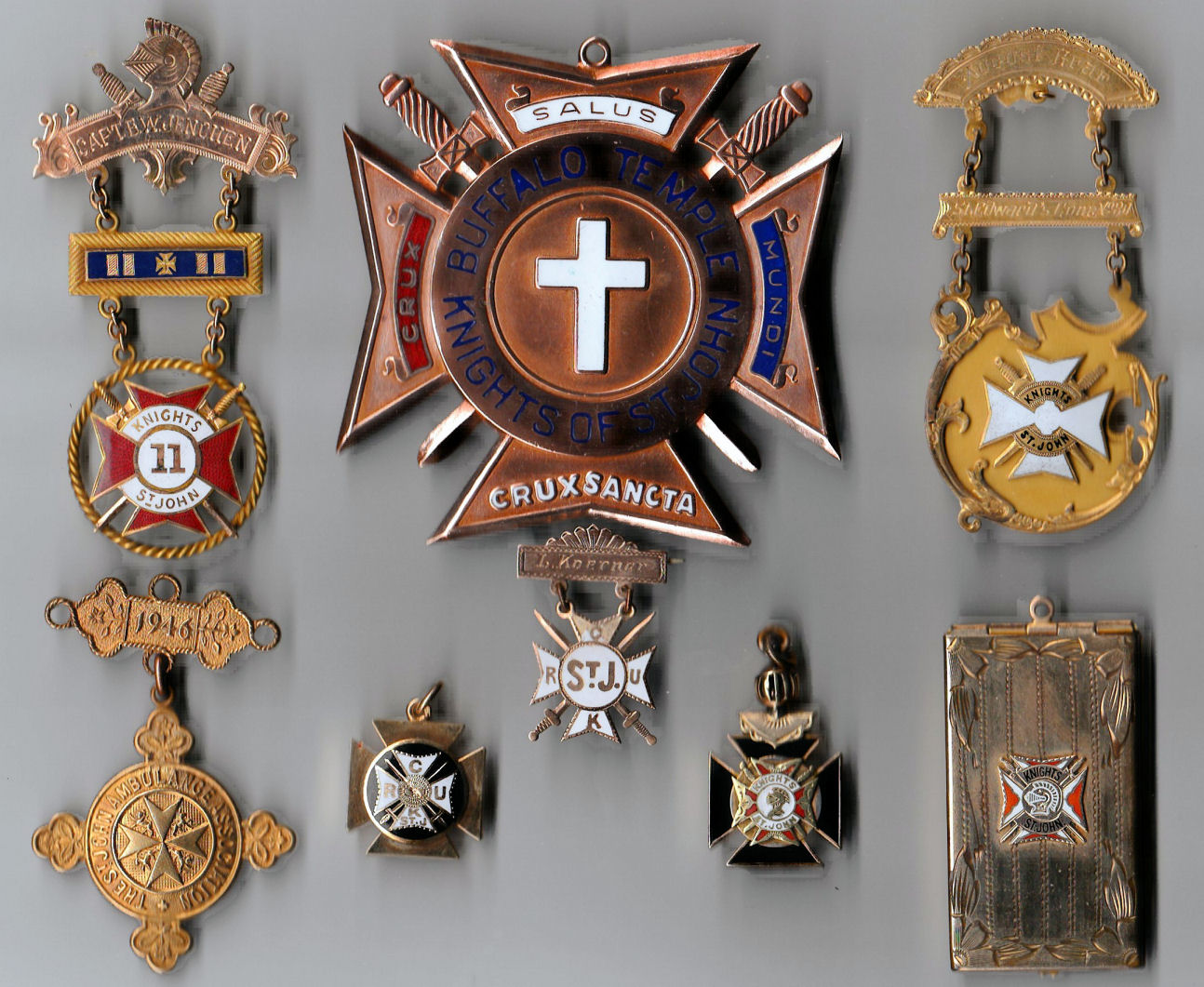The Knights of St. John

The Order of the Knights
Hospitalers of St John of Jerusalem was founded in Jerusalem in 1113 by
Brother Gerard, a Benedictine monk. The Order which was officially approved by
Pope Paschall II was formed principally to take care of the sick and provide
lodgings for pilgrims visiting the holy places of Jerusalem.
With the passage of time, the
Orders role spread into providing armed escort for pilgrims and eventually
into fighting the Muslims themselves when the order became a military order.
In 1187 Saladin captured
Jerusalem and the Knights were forced to leave. From there they transferred
their headquarters to Acre then on to Cyprus and finally to Rhodes which they
conquered after a two year battle in 1308. They remained there for about 200
years.
During their 200 year stay in
Rhodes they were constantly harassed by the Turks. The Knights became expert
seamen and pirates, and plied their trade against Turkish convoys and
merchantmen operating in the vicinity of Rhodes. The Order rapidly developed
into a great- sea-power in the Mediterranean.
While in Rhodes the Knights
founded a hospital, built the auberges, which pertained to different langues,
and fortified the island. The Turks could not ignore this Christian bastion on
their doorstep and in 1480 the Turks besieged Rhodes but did not succeed in
taking the island. It was at this time the the Order reorganized itself into
the eight Langues.
Again the Turks attacked and
following a 6-month siege by Soleyman's invasion force which consisted of 700
ships and 200,000 men, the knights were compelled to relinquish the island of
Rhodes on the 1st of January, 1523.
The knights soon started their
peregrinations in search of a new home. Provisionally they set up their
Convent in Viterbo. Subsequently, the Holy Roman Emperor, Charles V of Spain,
granted on fief the Maltese Islands together with Tripoli to the Order. The
islands were granted to them for the token payment of one falcon a year
(incidentally, this is where the legend of the Maltese Falcon began). Led by
the aging Grand Master Philippe Villiers de L'Isle Adam, on board the carrack
Sant Anna, they entered Malta's harbor, accompanied by 4,000 men of the
Order on the 26th October 1530. Malta's population was 12,000.
The Knights immediately began to
fortify the island. From Malta, and with the aide of the all ready pirate
employed Maltese, they continued to harass Turkish merchantmen. They were more
effective from Malta, because they were able to control shipping between
Africa and Turkey, as well as the East-West axis.
In August 1557, a Frenchman,
Jean Parisot de la Vallette was elected Grand Master at the age of 67. In
August of 1567 Sulieman the Magnificent, now an old man, decided to inflict a
decisive blow on Malta and the Knights, his mortal enemies. On receiving the
news, La Vallette continued to extend the islands fortifications and recalled
Knights from all over Europa, as well as began stockpiling adequate supplies
for the inevitable battle to come.
The siege began on the 18 of May
1565. It ended four months later in September when the utterly defeated
Turkish force withdrew back to Turkey.
The Order and the Maltese
enjoyed a "Golden Age" as the island prospered under the Orders influence. The
island was fortified even further, and its capital, Valletta was considered an
impregnable fortress. Each successive Grand Master continued to build and add
to the fortifications even further. A long period of peace was enjoyed and the
only "true" military action the Knights took during this time (they continued
their piracy) was at Lepanto, where the Order contributed seven galleys to the
battle.
By the eighteenth century,
however, the importance of the Order was greatly weakened. During the French
revolution in 1798 the Order suffered another heavy blow when the wealth of
the Order in France was confiscated by the revolutionary government. The
orders income was reduced to 1/6 of what it was.
In 1798, while Napoleon was on
his way to campaign in Egypt he landed in Malta under the pretext of obtaining
water and supplies. He then marched on to Valletta and presented an ultimatum
to the Knights demanding Grand Master Hompsech surrender. Hompsech faced by a
corrupt an unprepared Knighthood and insurrection from the Maltese decided to
surrender Valletta to Napoleon. What was considered Europa's best fortress was
conquered without a shot being fired. Napoleon pensioned off the Grand Master
and within four days the Knights had left the islands.
After Napoleon was defeated in
Egypt, the Maltese with the aide of the British successfully besieged the
French garrison in Valletta. Under the Treaty of Amiens, 1802, Malta was to be
returned to the Order. But pro-British demonstrations took place and Malta
eventually (voluntarily) joined the British Empire
The order had effectively ceased
to exist. After 900 years the Order of St. John was no longer a
Knighthood in the true sense of the word. The Order still exists today in a
symbolic capacity, and has 300 members world wide. They also maintain an
embassy at their last and most glorious home - Valletta, Malta. The Knights of
St John are the worlds oldest Knighthood and the worlds third oldest religious
order.

